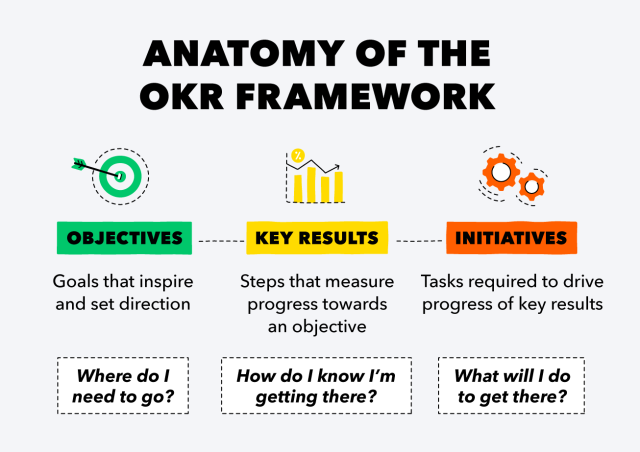What is Objectives and Key Results (OKRs)?
Objectives and Key Results (OKRs) is a goal-setting framework that helps businesses set ambitious goals with measurable outcomes.
Detailed Explanation
OKR is a collaborative goal-setting tool used by teams and individuals to set challenging, ambitious goals with measurable results. It consists of an Objective, a clearly defined goal, and 2-5 Key Results, specific measures used to track the achievement of that goal. The goal of OKR is to define how to achieve objectives through concrete, specific, and measurable actions. Key Results can be measured on a 0-100% scale or any numerical unit. Results are similar to KPIs, but are more closely tied to specific objectives.

Why It Matters?
In a SaaS context, OKR is an essential tool to align the team, focus efforts, and measure progress. For SaaS CEOs and CMOs, OKR provides a structure for ensuring every team member is moving in the same direction, contributing to the company’s growth and success. This aligns well with the principles of the Agile Methodology, which emphasizes collaboration, customer satisfaction, and flexibility in achieving goals.
Potential Misunderstandings
One common misunderstanding about OKR is that every Key Result has to be linked to an Objective. While it’s true that all Key Results should contribute to achieving the Objective, it’s not necessary that every Objective has a corresponding Key Result.
Frequently Asked Questions
1. Can OKR framework be used for individual performance evaluation?
While OKR is a goal-setting tool, it’s not designed to be used as a staff appraisal tool. OKR is about the team and company’s goals, not about individual performance.
2. How often should OKRs be set?
OKRs are typically set quarterly and annually. The quarterly OKRs provide the agility while the annual ones give the strategic direction.
